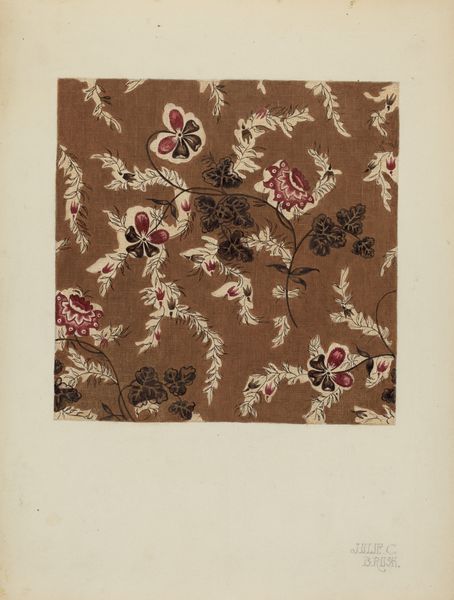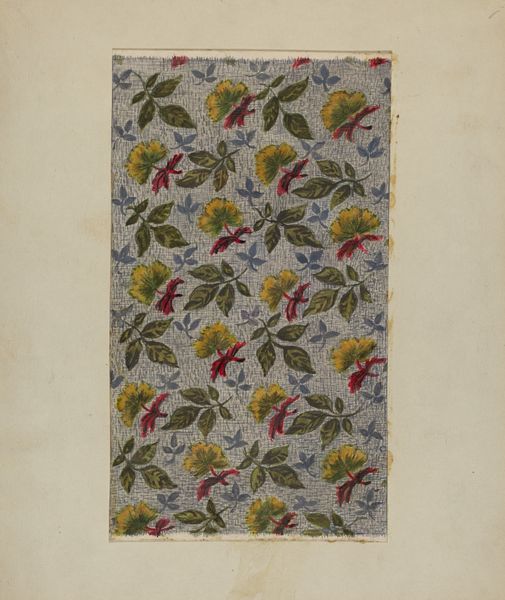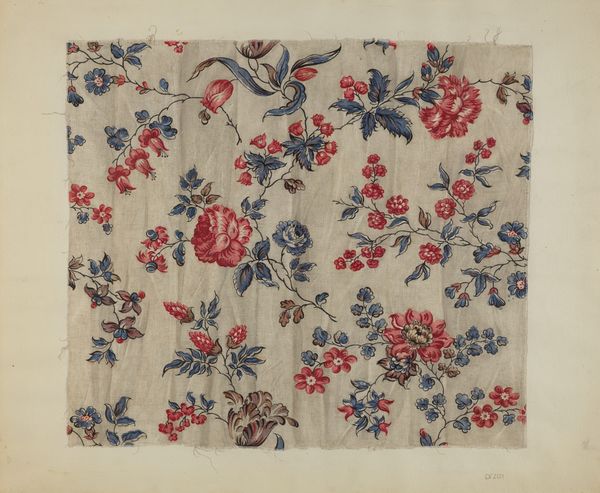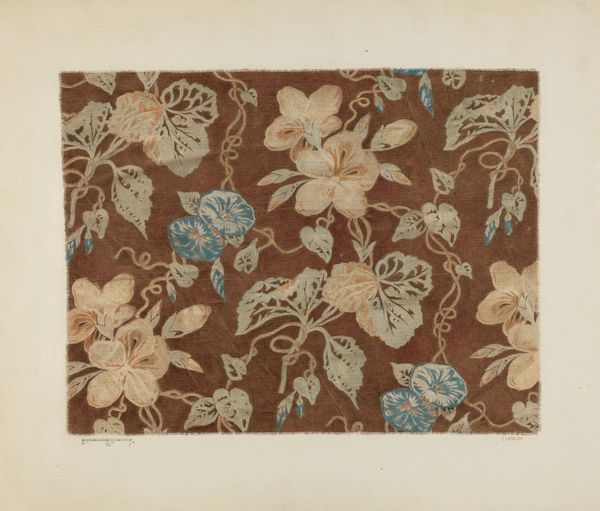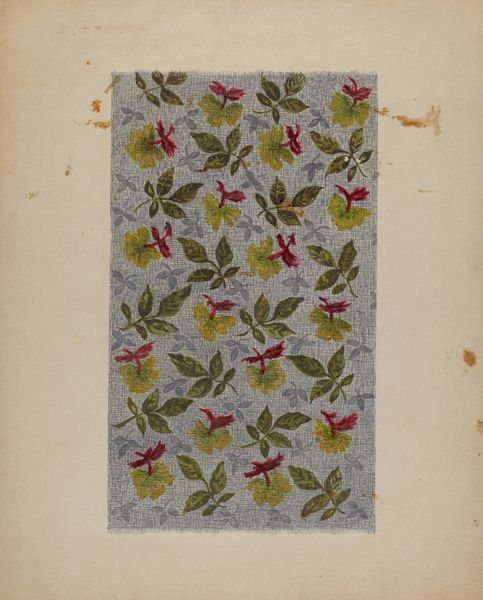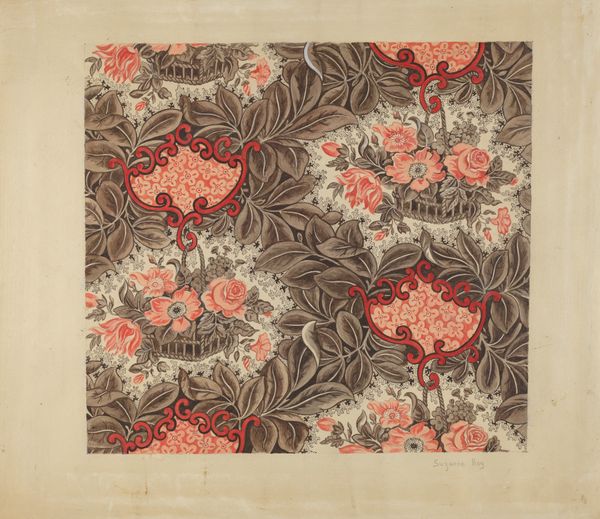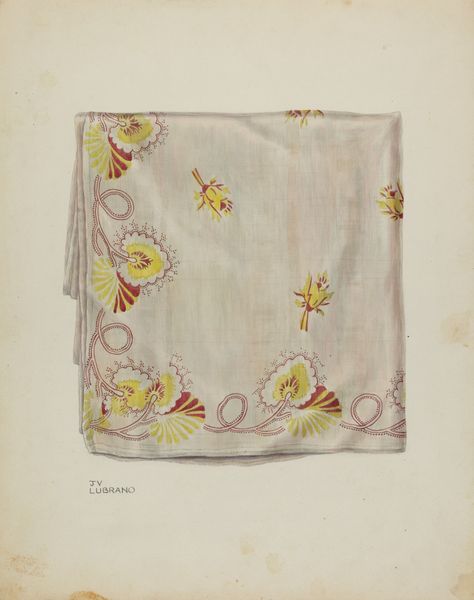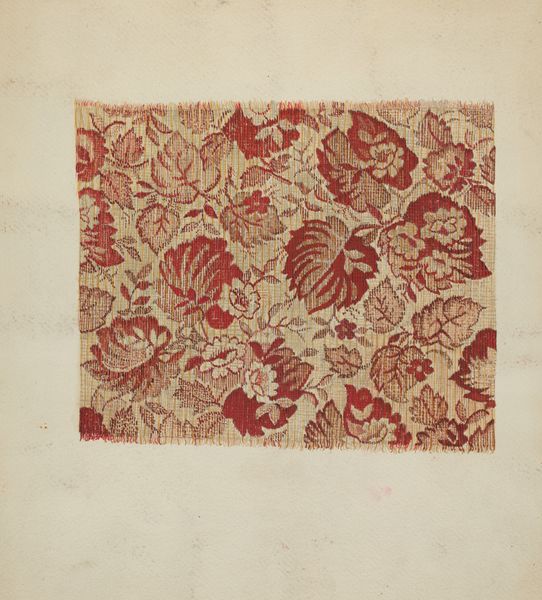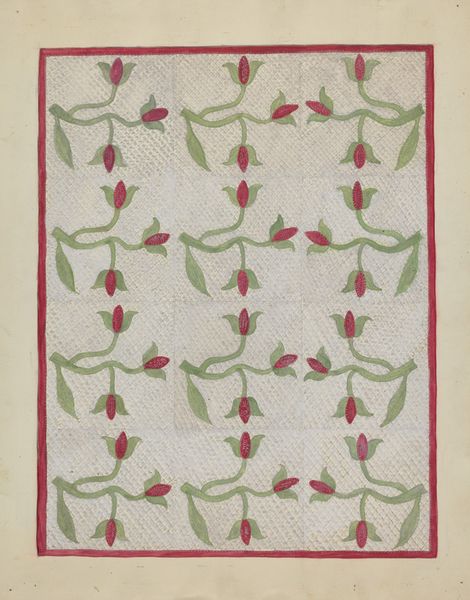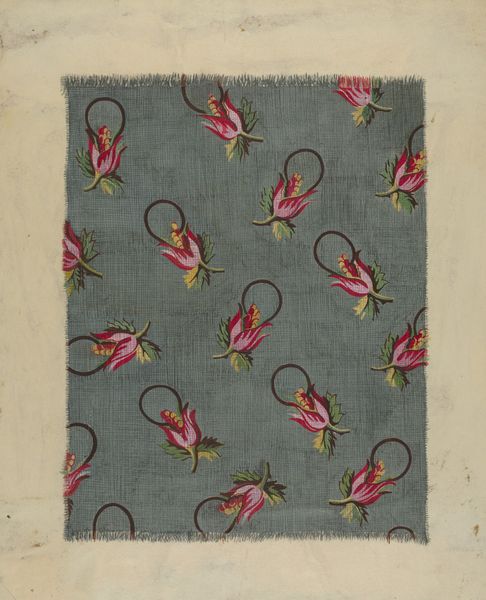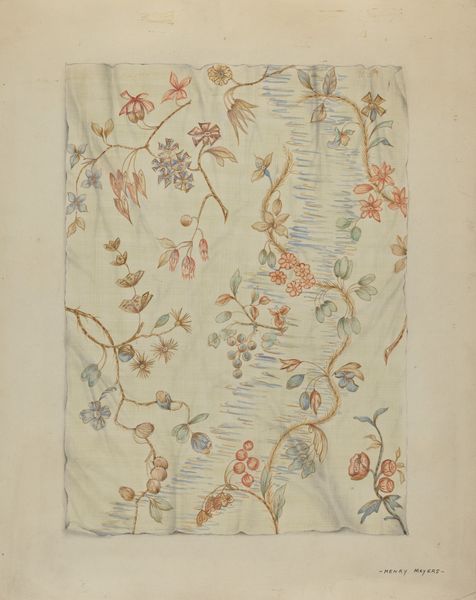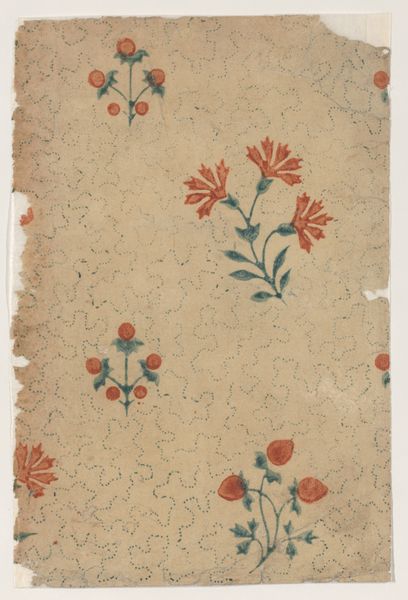
drawing, textile, paper, watercolor
#
drawing
#
textile
#
paper
#
watercolor
#
watercolor
Dimensions: overall: 35.2 x 28.6 cm (13 7/8 x 11 1/4 in.)
Copyright: National Gallery of Art: CC0 1.0
Curator: What a lovely textile sample. This is "Printed Cotton," created around 1941 by Joseph Lubrano. The design features watercolor and ink drawings on paper, illustrating a repeated pattern for printed fabric. Editor: It has such a sweet, demure quality. The faded rosebuds arranged in a neat grid almost feel nostalgic, like something from a vintage postcard. There's something so tender and contained in the design. Curator: Indeed. The regularity of the rosebud motif speaks to a kind of mass production aesthetic that gained popularity at the time, a very distinct visual language relating to a rising middle class with disposable incomes. Editor: I wonder what context this pattern was originally intended for. Those dots in the background evoke a certain feminine charm – a child's dress, perhaps, or a delicate piece of home furnishing. Do the rosebuds carry additional symbolism beyond their aesthetic appeal? Curator: The rose as an emblem has rich and complex histories in art. Traditionally, the rose is laden with layered cultural associations signifying beauty, love, even transience. I feel here though, due to its repetitive form, that its symbolic weight is somewhat lessened. Editor: It's interesting you mention transience. There's an unfinished quality about the edges of the paper itself that emphasizes the ephemerality of the artwork. It reminds us that designs like this can become relics, historical objects, holding a fragile mirror up to moments in time. The fabric looks timeworn. Curator: The creation of designs such as this highlights an interesting nexus within material culture. Designers and artisans directly catered to and simultaneously informed cultural taste on a broad, democratic scale. These pieces exemplify how societal preferences can trickle down and impact our immediate surroundings. Editor: In essence, something as simple as the pattern on a piece of cotton can tell a surprisingly intricate story about social shifts and design aesthetics in mid-20th century America. I see history embodied in such a piece. Curator: I am taken with how seemingly innocuous designs can provide us with subtle connections to cultural trends and meanings within society.
Comments
No comments
Be the first to comment and join the conversation on the ultimate creative platform.
